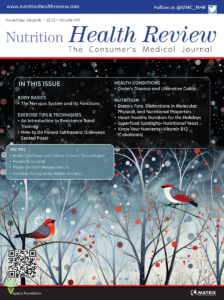Essential Terms
Type 1 diabetes:
A chronic condition in which the pancreas produces little to no insulin.
Type 2 diabetes:
People with type 2 diabetes are compromised in their ability to use insulin to allow glucose to enter cells.
Hemoglobin A1c (HbA1c):
A test to determine the average level of blood glucose over the past 2 to 3 months; also referred to glycated hemoglobin.
Fasting plasma glucose:
A measurement of a person’s blood glucose concentration after not eating anything for at least eight hours.
Impaired fasting glucose (IFG):
Blood glucose measured after a fast, typically overnight, in which the level is higher than normal blood glucose, but below the diagnostic threshold for diabetes. Sometimes termed impaired fasting glycemia.
Impaired glucose tolerance (IGT):
Blood glucose that is higher than normal, but below the diagnostic threshold for diabetes, after ingesting a standard amount of glucose during an oral glucose tolerance test. Fasting and two-hour glucose values are needed for its diagnosis.
IFG and IGT are also referred to as prediabetes.
Insulin:
A hormone produced in the pancreas in response to the ingestion of glucose (i.e., sugar). Insulin triggers cells to take up glucose from the blood stream and to convert it to energy.
Insulin resistance:
The inability of cells to adequately use circulating insulin, resulting in increased levels of blood glucose.
SOURCE: International Diabetes Federation. IDF Diabetes Atlas. https://www.diabetesatlas.org. Published 2019. Accessed Dec 17, 2019.
At any given time, a certain amount of sugar (glucose) is circulating around your body in the blood stream. Even in normal healthy individuals doing normal things, blood glucose levels go up and down
over the course of the day. For example, blood glucose goes up when we eat, and it goes down when we are hungry. Exercise can cause your blood glucose to drop
and eating a lot of sugar can cause it to spike upward.1 Blood glucose is typically measured in milligrams per deciliters, which means how many milligrams (mg) of glucose are traveling around in one deciliter of blood. (A deciliter, abbreviated dL, is about 3.3 ounces.) A normal blood glucose level is around 100mg/dL.
In healthy individuals, the pancreas secretes a hormone called insulin, which helps to regulate blood sugar and make sure the glucose is delivered to the cells of the body to provide energy. Insulin is also essential for the metabolism of protein and fat.4 In people with Type 2 diabetes, the pancreas is unable to produce enough insulin for the body’s needs, or the body is unable to use insulin properly (i.e., insulin resistance). The result is that too much sugar stays in the blood and not enough gets where it belongs in the cells. This condition is called hyperglycemia and is the clinical indicator of diabetes. Figure
1 illustrates specific clinical criteria for diagnosing prediabetes and diabetes. Type 2 diabetes is the most common form of diabetes, accounting for about
90 percent of diabetes cases worldwide.4 Similar to Type 1 diabetes, Type 2 diabetes is thought to be caused by genetic predisposition paired with environmental triggers. There is a strong link between obesity and overweight and Type 2 diabetes, along with increasing age and family history.4
Impaired insulin production or use, if left undiagnosed or mismanaged over the long term, can cause damage to many of the body’s organs, leading to disabling and life-threatening health complications such as cardiovascular disease, nerve damage, kidney damage and eye disease (leading to retinopathy, visual loss and even blindness). Appropriate management of diabetes can prevent or delay the onset of these complications. With treatment, people with Type 2 diabetes can maintain good glycemic control—that is, they can keep control of their blood sugar levels.2
Management of Type 2 diabetes depends heavily upon healthy lifestyle changes, including a healthy diet, regular physical activity, smoking cessation, and weight loss or maintenance of a healthy body weight. Lifestyle changes alone can sometimes be sufficient in controlling blood glucose levels; however, in the
case that they are not, oral medications, such as metformin, are generally the
next step in the management process. Insulin injections are used to control hyperglycemia after lifestyle changes and oral medications have been unsuccessful.4
Type 2 diabetes can contribute to or cause metabolic changes. People with Type 2 diabetes often have overweight or obesity and high cholesterol. Type 2 diabetes can also increase the risk for heart disease, stroke, kidney disease, nerve damage, foot problems, and vision problems.2 Another risk for people with Type 2 diabetes is diabetic ketoacidosis. This condition is not well tolerated by people with Type 2 diabetes and can even be potentially life-threatening.3 In people with Type 2 diabetes, it is important to monitor and manage blood pressure and blood lipid levels as a means to assess overall metabolic health and better avoid the complications associated with Type 2 diabetes.4
SOURCES
1. Clemens A, Siegel E, Gallwitz B. Global risk management in Type 2 diabetes: blood glucose, blood pressure, and lipids–update on the background of the current guidelines. Exp Clin Endocrinol Diabetes. 2004;112(9):493–503.
2. National Institute of Diabetes and Digestive and Kidney Diseases. Type 2 diabetes. National Institute of Diabetes and Digestive and Kidney Diseases. https://www. niddk.nih.gov/health-information/diabetes/overview/ what-is-diabetes/type-2-diabetes. Published 2019. Accessed December 3, 2019.
3. Trachtenbarg DE. Diabetic ketoacidosis. Am Fam Physician. 2005;71(9):1705–1714.
4. International Diabetes Federation. IDF Diabetes Atlas. https://www.diabetesatlas.org. Published 2019. Accessed Dec 17, 2019. NHR





